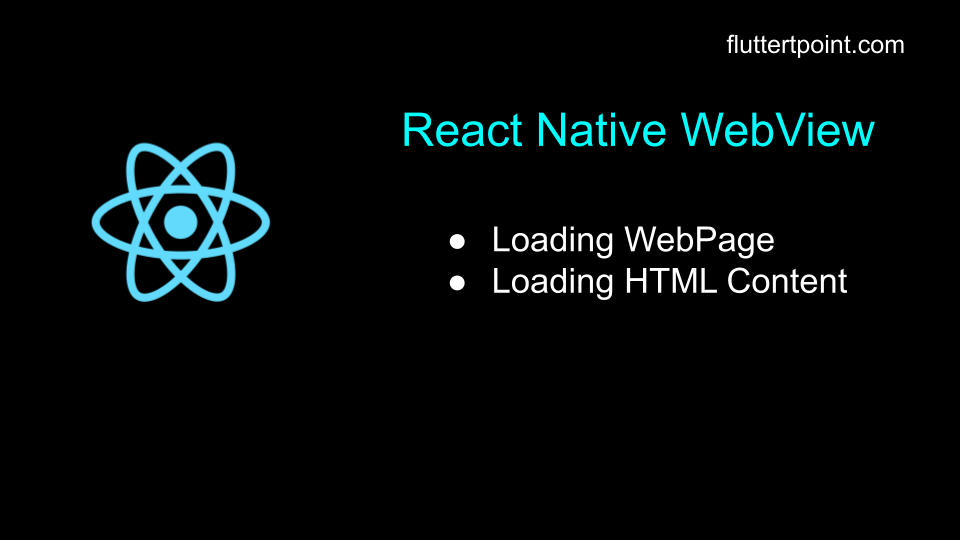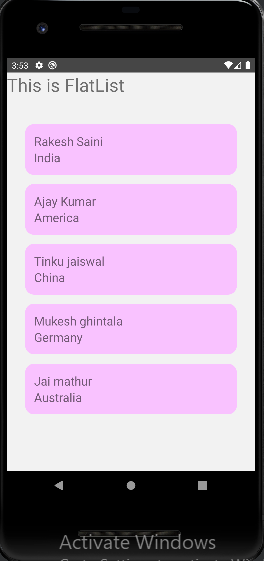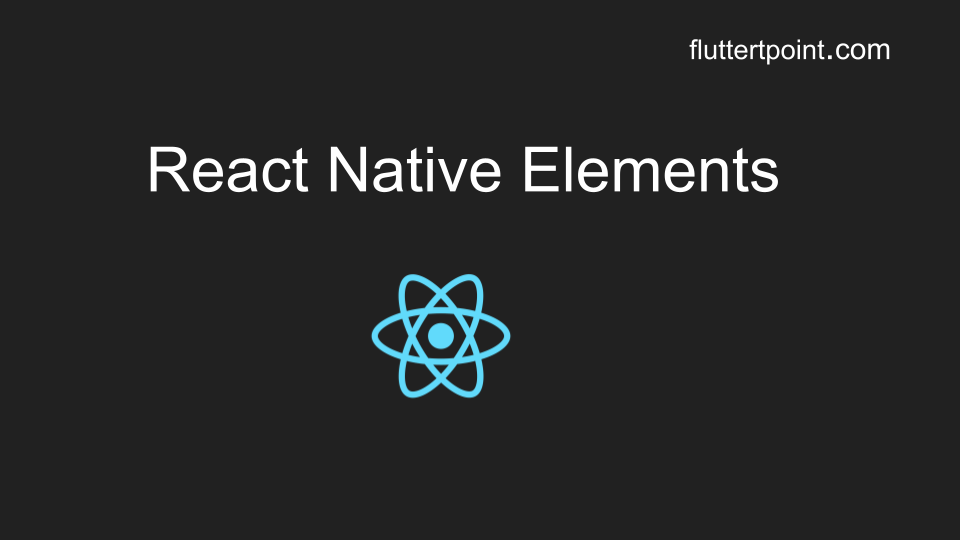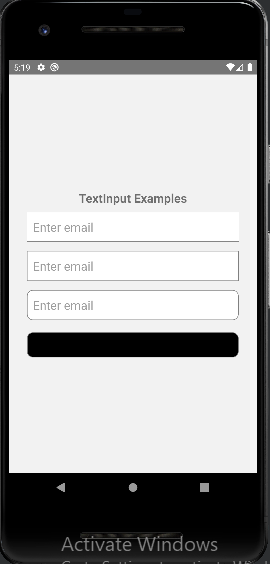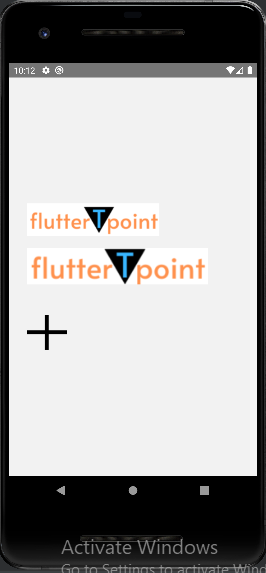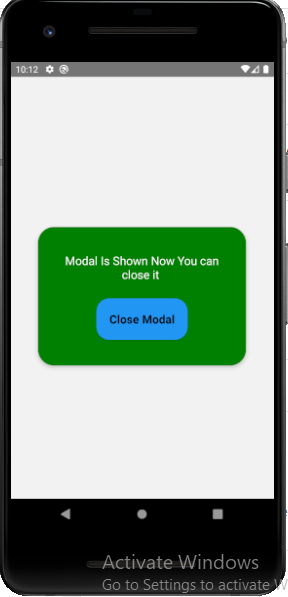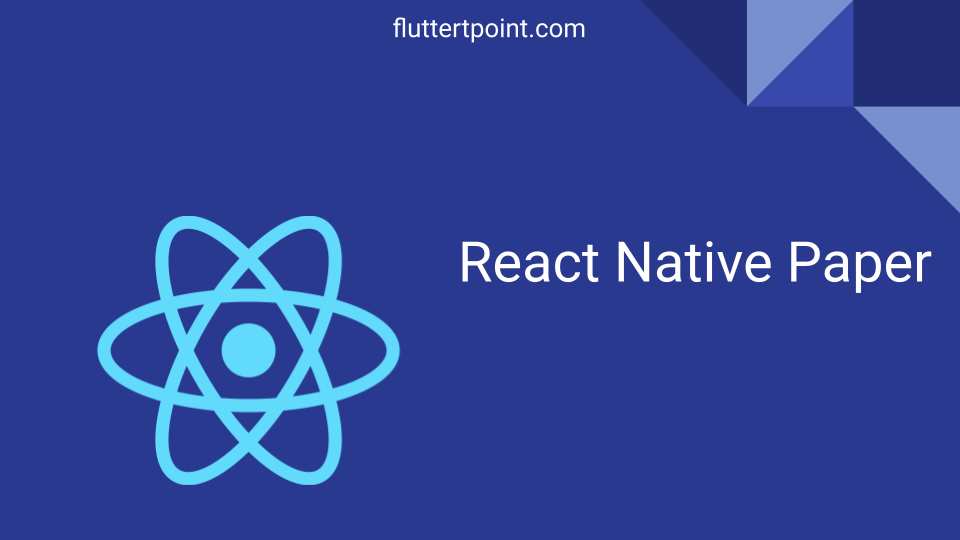In this tutorial we will learn about Interview Questions and Answers for React Native. Below are some of the important Questions with Answers for RN Interview.

React Native Interview Questions And Answers
A list of frequently asked React Native Interview Question with answers. Below are some of the questions which generally asked by interviewer in the interview.
1. What is React Native?
It is an open source JavaScript framework introduced by Facebook. Developers uses React Native for developing native applications for android and IOS mobiles. It uses only JavaScript to build the applications. It is cross-platform, which allows you to create the application once and run on any platform.
Mostly, React Native develops mobile apps rather than web apps. You can create the android and IOS apps by only a single language which is JavaScript.
2. What is State in React Native?
The State is used to control the component. States are also change the data of any variable. It also allows the data into variable in it.
3. Can We Combine Android An IOS Code In React Native?
Yes, we can combine the Android and IOS code in React Native. It smoothly allows to combine the Component written in Java, Objective-c and Swift.
4. What are the advantages of React Native?
- Cross-Platform – Write the code once for multiple devices like for Android and IOS mobiles. Cross-platform apps can created by using React Native.
- JavaScript – JavaScript is simple and widely used programming language. It is easy to learn.
- Performance – The performance or React Native apps is good. The operating system provide the functionality to build the performative apps.
- Hot-Reloading – The changes in the code reflects immediately in the app while developing the app.
- Community – React Native has large community to help and solve the bugs for the developers.
- Faster Development – React Native helps to developers to build the cross-platform apps fast with the single code-base.
5. What are Threads in React Native?
React Native uses 3 threads which are as below:
- MAIN/UI Thread : This is main application thread on which your android/IOS app is running. The UI of the application can be changed by Main thread and it has access for that.
- Shadow Thread : Layout created using React library in React Native can be calculated by this and it is a background thread.
- JavaScript Thread : The Main JavaScript code is executed by this thread.
6. What are the Props in React Native?
Props means the argument in the React Native which are used to customize a component. Props are also passed as arguments while calling a React Component.
7. What is HOC in React Native?
High-Order-Component, Shortly known as HOC is an advanced React Native technique to reuse the component logic. The function obtain a component and return a new element.
If you are a React Native Developer then these Questions Will help you to crack the Interview.
8. What is the use of Arrow function In React Native?
The use of Arrow function in React Native is the reduce the memory of the application. It is done by reducing the CPU time required to iterate the over loops to generates the components necessary for your lists. Example of Arrow function in the render button call is below:
class Test extends Component{
isClicked(){
console.log("Yes Clicked")
}
render()
{
return <button onClick={() => this.isClicked()}>Click Me</button>;
}
}9. What is AppRegistry In React Native?
AppRegistry is entry point in the React Native app. All the component of the app root must register themselves with AppRegistry.registerComponent().
9. What is the use of Redux in React Native?
Redux is the state management library that interacts with Components. You can access the outer Component using the Redux in React Native.
10. What are the limitations of React Native?
The React Native has the following limitations:
- Security.
- Single threaded.
- Poor memory management.
- Doesn’t support all native APIs.
- Dependable on third-party libraries.
- Not equivalent to true native apps
React Native Interview Questions
11. List of major users of React Native.
There are thousands of built-in apps. Here is the list of those apps.
- Facebook.
- Tesla
- Skype
- Bloomberg
- Gyroscope
- Myntra
- Uber Eats
- Walmart
- Baidu Mobile
12. How to run React Native App on Android?
To run React Native app on android, we have to follow these commands:
- First enable USB debugging option in the Developer Options in mobile.
- Plug in the cable then you will see your device name on the computer screen.
- Run the command to install – $ react-native run-android
13. How Virtual DOM works in React Native?
Virtual DOM is a lightweight JavaScript object. which is an in-memory representation or a real DOM. It serves as a middle step between invoking the render function and presenting the elements on the screen. It is similar to a node tree which lists the elements, their attributes and the content as objects and their properties.
Virtual DOM works in three steps:
- Whenever any data changes in the React app, the entire UI re-rendered in the virtual DOM representation.
- Now, the difference between the previous DOM and new DOM calculated.
- Once the calculations are calculated the DOM updated only those things which are updated.
14. Do we use same code base for Android and IOS?
Yes we use same code base in React Native for Android and IOS apps.
15. What is the difference between an Element and a Component in React Native?
| React Component | Element |
|---|---|
| The React Component is a class or a Function which takes input and return an React Element. It contains references to its DOM nodes and the instances of the child components | The React Element is simple objects which describes, a DOM nodes and its attributes and its properties. It is an immutable object where you can not apply any methods. |
| Ex. const Login = () =>{ return( <View> <Text>This is React Component</Text> </View> ); } | Ex. <button class=”login-button”>Login</button> |
Read More Useful React Native Interview Questions.
16. What is the difference between React and React Native?
The essential differences between React and React Native are:
| React | React Native |
|---|---|
| 1. React is a JavaScript Library. | 1. React Native is JavaScript framework based on React. |
| 2. React is use for developing UI and web applications. | 2. React Native can be used for developing cross-platform mobile apps. |
| 3. React is just a view part. | 3. React Native can be follow the MVC pattern. |
17. Is there browser IDE for React Native?
Yes, there are browser IDE for React Native.
18. What is Flex?
Flex or flex boxing is a technique to distribute different components to React Native apps. You can distributes React Native view horizontally, vertically, provide space in between or around.
19. Do React Native support HTML?
No, React Native does not support HTML.
What is Render in React Native?
Render prop is a technique in which the Components are transformed into DOM nodes, which are understood by the browser.
20. What are the disadvantages of using React Native?
- Learning is tough for fresher in the app development using React Native.
- React Native is new and immature.
- Is is still in the improvement stage.
- Lacks the security robustness.
- It takes more time to initialize.
- Third-party dependent

21. What are the differences between React Native And Flutter?
Some of the basic differences are below:
| React Native | Flutter |
|---|---|
| 1. Released by Facebook in 2015. | 1. Released by Google in 2017. |
| 2. JavaScript is used to develop the applications. | 2. Dart is used to develop the applications. |
| 3. To build the UI, class component or functional components are used. | 3. In Flutter to build the UI, stateless or statefull widgets are used. |
| 4. Third party libraries are installed using “npm library_name“. | 4. In Flutter “flutter pub add library_name” used to add third party library. |
| 5. Third party libraries are added into the package.json file. | 5. Third party libraries are used into pubspec.yml file. |
| 6. React Native uses Flux or Redux architecture. | 6. BLoc(Business Logic Component) Architecture is used. |
22. What is JSX?
JSX is shorthand for JavaScript XML. This is a type of file used by React which utilizes the expressiveness of JavaScript along with HTML like template syntax.
23. What is an event in React Native?
Events are the actions on mouse over, button click or key press etc. Like onClick={this.functionName}.
24. What are Refs and its use in React Native?
Refs is the short hand for references in React. It is an attribute which helps to store a reference to a particular React Component. Which will be returned by the components render configuration function. Some of the uses are below:
- When you needed to make focus, select text or media playback.
- To trigger imperative animations.
- Integrate with third party DOM libraries.
25. What are the Higher Order Component(HOC)?
Higher Order Component is an advance way of reusing the component logic. Basically it’s a pattern that is derived from the React Componential nature. HOC are the custom components which wrap another components within it.
Thanks for visiting the tutorial on FlutterTPoint. Our wishes to your Interview For React Native Questions. Please learn more useful content for React Native.
Suggestions:
Lottie In React Native With Example
React Native Paper With Examples
Modal In React Native Examples
React Native WebView With Examples
Async Storage React Native Example


